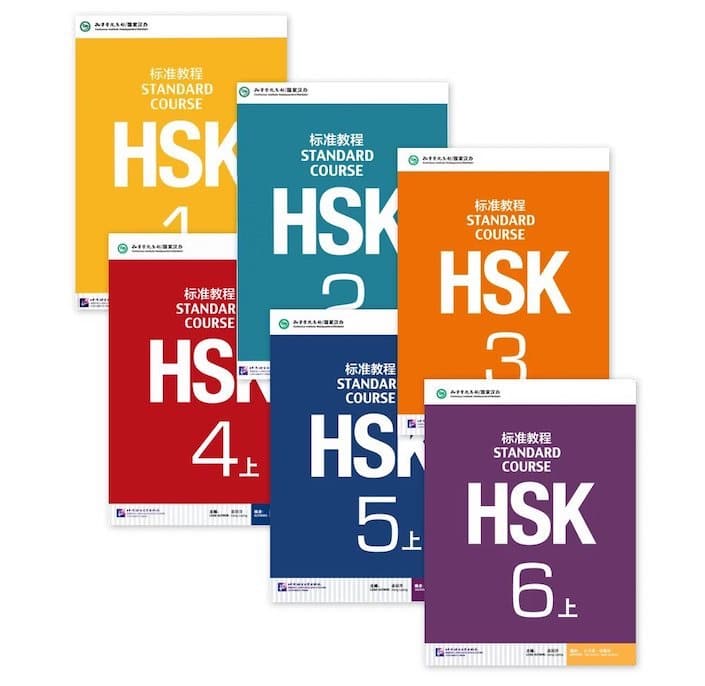The Newly Revised HSK (2025): What You Need to Know
Learn Chinese in China or on Zoom and gain fluency in Chinese!
Join CLI and learn Chinese with your personal team of Mandarin teachers online or in person at the CLI Center in Guilin, China.
The HSK exam is an important benchmark for Chinese language learners around the world. For the first time in over a decade, it’s about to undergo major updates. Read this article to learn everything you need to know about these upcoming changes and how they’re likely to affect your Mandarin learning journey.
Table of Contents
The New HSK at a glance
Before we go into more detail about what’s happening with the new HSK, here are some key takeaways for those interested in understanding the reforms at a glance:
- The new HSK will have three “stages” (Beginner, Intermediate and Advanced). Each stage will be divided into 3 different levels, making for a total of 9 levels. For comparison, the current HSK has 6 levels.
- There were no changes to the HSK in 2021. In March 2022, the advanced stage (levels 7-9) will be introduced.
- The advanced stage will consist of only one exam. After taking it, students will be assigned to level 7, 8 or 9 based on their overall performance.
- Changes to the existing HSK levels 1-6 aren’t expected to occur until 2025 at the earliest.
Read the rest of our article to discover more details about the new HSK exam.

The new HSK will have a total of nine different levels, making it more challenging than the current exam.
What is the HSK and why do we need a new one?
The HSK, officially called the 汉语水平考试 (Hànyǔ Shuǐpíng Kǎoshì), is a Chinese proficiency test popular in mainland China and many other countries around the world. It’s only available in simplified Mandarin Chinese and tests reading, writing and listening. Students who want proof of their speaking proficiency must take a different test, the HSKK.
The original HSK
Before the current 6-level version of the HSK was released, there was another version of the test which consisted of 11 levels that had been around since 1992.
This original 11-level test was much more difficult than the current version. It was primarily aimed at members of Chinese ethnic minority groups and students from other Asian countries. The higher levels included a variety of obscure cultural references and tested extremely advanced vocabulary and grammatical constructions.

The first version of the HSK, released in 1992, consisted of 11 levels and was primarily aimed at students from Asia.
The current HSK and its discontents
In an effort to make the HSK more accessible to students with non-Asian backgrounds, this early version of the HSK was revised. The current version as we know it today was released in 2010. It consists of six different levels that get progressively harder as you go along.
This reform was a success in that it made the test more accessible and likely helped to contribute to the HSK’s current popularity among Chinese language learners. However, many argue that the current version of the HSK is now too easy and that those who are able to pass the highest level, HSK 6, are still far from fluent.
The makers of the current HSK claim that the test structure corresponds to the six levels of the respected Council of Europe’s Common European Framework of Reference for Languages (CEFR) system, but many, if not most, language teachers outside China reject this idea.
Instead of being equivalent to C2, the highest CEFR rating, the HSK 6 is commonly thought to be equivalent to a B2 or, at most, a C1 on the CEFR scale.
One of the main reasons that the current exam is now being reformed (and made harder in the process) is to ensure that it’s more in line with widely accepted international standards for language proficiency.

Many experts claim that the current HSK does not accurately correspond to existing international language proficiency standards.
What we know about the new HSK
In May 2020, Chinese Testing International, the organization that administers the HSK, announced via Twitter that the current HSK test and the Chinese Proficiency Standards on which it is based are both going to be reformed. Since then, more details about the upcoming changes have been released.
The new HSK will consist of three broad stages: Beginner, Intermediate and Advanced. Each of these stages will then be divided into three levels, for a total of nine levels.
Beginning March 2022, the new HSK will look like this:
Each of the first six levels of the new HSK will have its own requirements when it comes to the number of vocabulary words, characters, syllables and Chinese grammar points that students are expected to master. Furthermore, each of these levels will be independent and self-contained.
This structure will change at the advanced stage, however. While there will still be separate tests for levels 1-6, just like there are on the current HSK, there will only be one test administered for all three of the new HSK’s most advanced levels. All students at the Advanced Stage will take the same test before being assigned to either level 7, 8 or 9 depending on their score.
According to Chinese Testing International, the Advanced Stage of the new HSK is aimed at students who want to study for Master’s or Doctorate degrees in China. It’s also meant to meet the needs of students who are majoring in Chinese or other sinology-related fields.

The new HSK will be more suitable for students of all levels, from beginner to highly advanced.
New HSK launch timeline
Because there is currently no suitable test for advanced Chinese language students, the Advanced Stage of the new HSK will be the first reform to be rolled out. The official launch of the single integrated test for all levels at the Advanced Stage is scheduled for March 2022.
Since levels 1-6 of the current HSK already meet the needs of beginning and intermediate students, they will not be revised immediately. Levels 1-6 will stay the same for the immediate future.
It's likely that new versions of levels 1-6 will be released sometime between 2024-2026. Next, the old levels 1-6 will slowly be phased out and may be completely replaced by a new level system around 2027.

The current HSK is unlikely to be completely replaced by the new exam until around 2027.
New HSK, new content
Since the new HSK has yet to be released, most of the information we currently have about the test content is just speculation. However, based on a mixture of concrete facts drawn from official announcements and educated guesses based on the development and design of the current HSK, we can make several informed assumptions about the content of the new HSK.
The current HSK exam tests listening, reading and writing skills. These skills will also be tested on the new HSK, with the addition of a fourth skill: translation. On the new test, students’ translation skills will be tested on all three of the intermediate level tests, that is, levels 4, 5 and 6. The Advanced Stage test for levels 7, 8 and 9 will also include a translation section to test students’ professional translation skills.
According to media sources, these new translation sections will require students to be able to translate from Chinese into English and vice versa. Therefore, if you aren’t a native English speaker, you may need to brush up on your English writing skills before attempting the new HSK.
In addition to the new translation section, it’s also very likely that students will be tested on a much greater number of vocabulary words. While no specific new vocabulary lists have been officially released, it is possible to make some educated guesses about new vocabulary requirements based on what’s included in the new Chinese Proficiency Standards.

The number of vocabulary words required to master each level of the new HSK is likely to increase substantially.
The new Chinese Proficiency Standards and the new HSK
While we don’t know exactly what content the new HSK will cover, we do know a lot of details about upcoming changes to the Chinese Proficiency Standards on which the HSK test is based.
Introduction to the Chinese Proficiency Standards
The Chinese Proficiency Standards are a set of guidelines for those working in the field of Chinese language education. They resemble a set of best practices that Chinese language teachers can consult when creating Chinese language curricula. These standards are not the same as the HSK test.
The current HSK is based on the old set of Chinese Proficiency Standards which were issued by Hanban in 2007. These old standards organized the knowledge that Chinese language students were expected to master into five different levels.
It’s important to note that the fact that the current version of the HSK, which is based on this old set of standards, is made up of six levels, not five, shows that there is not necessarily a one-to-one correspondence between the Chinese Proficiency Standards and the HSK test.

The HSK exam is based on the Chinese Proficiency Standards, which are also undergoing revision.
The new Standards
In May 2020, it was announced that the Chinese Proficiency Standards were being revised and that the HSK would also be reformed to better reflect these new standards.
The Chinese Ministry of Education has released detailed information (link in Chinese) on these standards, which are called 国际中文教育中文水平等级标准 (Guójì Zhōngwén Jiàoyù Zhōngwén Shuǐpíng Děngjí Biāozhǔn) in Chinese. These new standards are set to be implemented on July 1, 2021.

The Chinese Ministry of Education has already released detailed information on the new Chinese Proficiency Standards, which are meant as a guide for Chinese teachers.
What will students actually be expected to learn?
The new standards that have been announced are extremely detailed when it comes to the exact number of syllables, Chinese characters, vocabulary words and grammar points that students at each level are expected to master.
Once the new HSK has been completely revised, it’s very likely that the requirements for each stage and level will look similar to the requirements that have been laid out in the Chinese Proficiency Standards, which can be found in the below table.
Required Proficiency by Level (new HSK)
Each level of the new HSK is cumulative, meaning that it builds on the levels that came before it. In the above table, the number of new vocabulary words or grammar points required for each level is noted in parentheses after the total number required at each level.
The new Standards and the new HSK: A one-to-one correspondence?
Recently, many writers have interpreted the details of the new Standards outlined in the table above as having a direct, one-to-one correspondence with the content of the new HSK exam.
Some have even gone so far as to publish “new HSK word lists” based on the words included in the new Standards. This is somewhat premature, however.
It’s important to keep in mind that the new Standards are meant as a guide for Chinese teachers to use when designing teaching curricula, not as a definitive list of content for the new HSK exam.
Although the content of the new HSK will probably not adhere to the new Standards exactly, it will likely be similar. Therefore, it makes sense to briefly compare the current HSK requirements to the requirements laid out in the new Standards to get an idea of how they contrast.
The word and character requirements for the current HSK are listed in the following table.
Current HSK Requirements
| Words 词汇 | Characters 汉字 | |
|---|---|---|
| HSK 6 | 5,000 | 2,663 |
| HSK 5 | 2,500 | 1,685 |
| HSK 4 | 1,200 | 1,064 |
| HSK 3 | 600 | 617 |
| HSK 2 | 300 | 347 |
| HSK 1 | 150 | 174 |
If we compare these requirements with those laid out in the new Standards, it is clear that if the new HSK follows the Standards closely, it will be much more difficult than the current HSK.
For example, take a look at the number of required vocabulary words: HSK 1 currently only requires mastery of 150 words, whereas the corresponding Beginning Stage Level One of the new HSK requires 500 words.
The number of words required by the current HSK 6 (5000) is similar to the 5456 number laid out in Level 6 of the Intermediate Stage in the new Standards. However, the number of words required at the Advanced Stage according to the new Standards (11092), is far greater than that required by the highest level of the current HSK.
Thus, it’s safe to say that the new HSK will be substantially more difficult than the current test. Not only will it be much harder to pass the highest level, but even obtaining a first level certificate is sure to be a bigger challenge.

Just obtaining the lowest level of the HSK is set to become substantially more challenging.
What does the new HSK mean for current students?
In the long-run, the launch of the new HSK is definitely a good thing for current Chinese language students. The addition of the more difficult, advanced stage of the exam will provide students with greater motivation to achieve a higher level of Chinese proficiency.
Since teachers will need to find more effective ways to help students who are already relatively advanced improve even further, the new test will also prompt innovation in the way that Mandarin is taught in China and around the world.
Furthermore, bringing the HSK exam more in line with internationally recognized language proficiency standards is likely to help it gain more recognition outside of mainland China.
If you’ve already taken the HSK, you might be worried that your existing test scores will soon become obsolete. However, due to the fact that changes to the existing levels 1-6 of the HSK are set to be introduced gradually over a number of years, current HSK scores will almost certainly remain valid for quite some time.
If you’ve already passed the current HSK 6, you may feel annoyed that you will no longer be able to claim that you’ve passed the exam’s highest level. While this feeling is understandable, it’s helpful to look at the impending launch of the Advanced Stage levels as a new challenge that will help you expand your knowledge of Chinese even further.
If you’re looking to get a head start on improving your Chinese in preparation for the launch of the new, more difficult HSK, consider studying Chinese online or traveling to China to learn the language in an immersive environment.
Good luck, and remember to check this page frequently for more updates on the new HSK.

The new HSK will provide Chinese language students with renewed motivation to achieve higher levels of language proficiency.
| 汉字 | Pīnyīn | English |
|---|---|---|
| 考试 | kǎoshì | exam; test |
| 汉语水平考试 | Hànyǔ Shuǐpíng Kǎoshì | the HSK exam |
| 国际中文教育中文水平等级标准 | Guójì Zhōngwén Jiàoyù Zhōngwén Shuǐpíng Děngjí Biāozhǔn | Chinese Proficiency Standards |
| 考场 | kǎochǎng | exam venue |
| 考生 | kǎoshēng | exam candidate |
| 考官 | kǎoguān | examiner |
| 备考 | bèikǎo | prepare for an exam |
| 音节 | yīnjié | syllable |
| 汉字 | Hànzì | Chinese character |
| 词汇 | cíhuì | vocabulary |
| 语法 | yǔfǎ | grammar |

Anne Meredith holds an MA in International Politics and Chinese Studies from the Johns Hopkins School of Advanced International Studies (SAIS). As part of the graduation requirements for the program, Anne wrote and defended a 70-page Master's thesis entirely in 汉字 (hànzì; Chinese characters). Anne lives in Shanghai, China and is fluent in Chinese.









